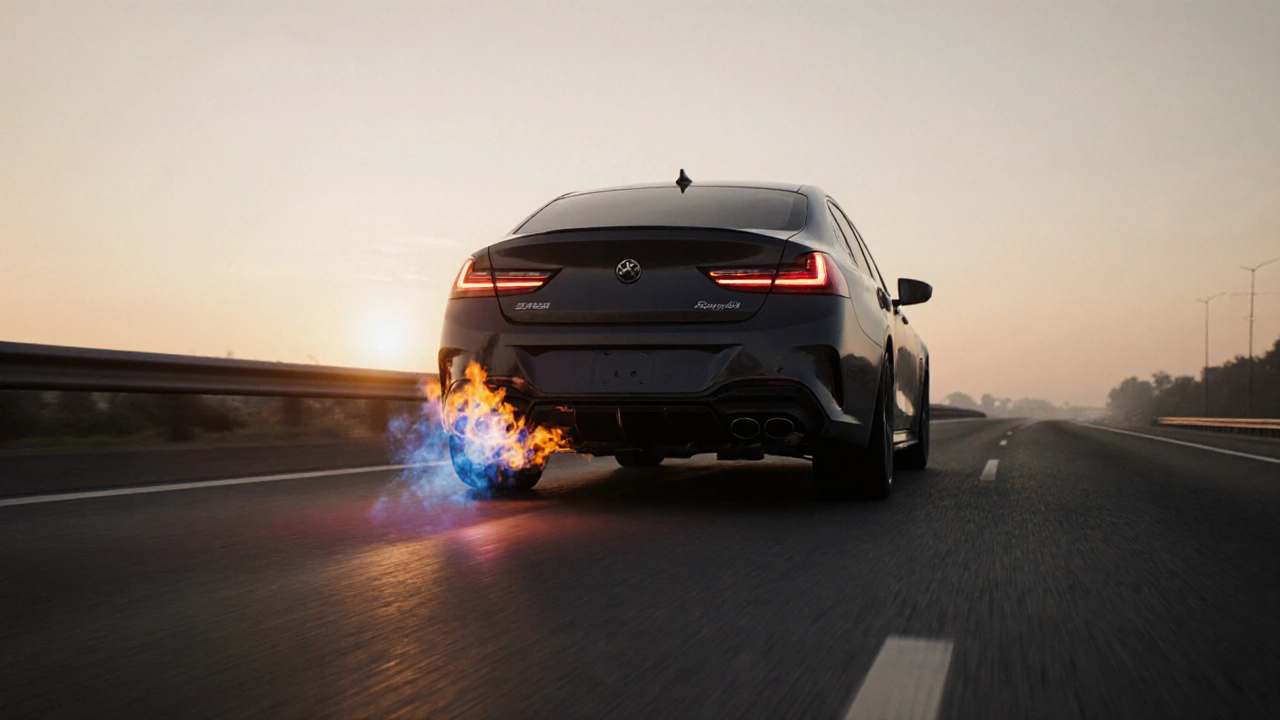When talking about Engine flame, a visible flame that bursts from a vehicle's exhaust during hard acceleration, typically caused by unburned fuel igniting in the hot exhaust pipe. Also known as exhaust flame, it adds drama but also raises safety and legal concerns.
One of the main drivers behind a flame is the exhaust system, the network of pipes, mufflers, and catalytic converters that channels exhaust gases away from the engine. The design of the system—pipe diameter, material, and length—directly influences how quickly gases cool. When gases stay hot enough, any leftover fuel ignites, creating the signature burst. In short, engine flame results from unburned fuel meeting a hot exhaust surface.
Owners who chase power often turn to performance tuning, adjustments to fuel delivery, ignition timing, and boost pressure that increase engine output. These tweaks often run richer fuel mixtures to protect components, leaving extra fuel in the combustion chamber. When the engine revs high, that excess fuel rides down the exhaust and ignites, making flames more frequent. In other words, performance tuning can increase the likelihood of an engine flame, especially on turbocharged or supercharged builds.
Beyond raw power, tuning also affects the engine’s temperature profile. Higher exhaust gas temperatures mean the spark that creates the flame happens sooner and burns brighter. For many enthusiasts, that bright flash is a badge of a well‑tuned car, but it also means you need to keep an eye on heat‑related wear in the exhaust system and nearby components.
Safety is not optional. A flame that shoots higher than a few inches can scorch nearby pedestrians, damage low‑clearance bodywork, or even trigger insurance claims. Local regulations often treat visible flames as a public‑road hazard, leading to fines or failed inspections. Properly shielding the exhaust tip with heat‑resistant wraps and ensuring the flame stays within legal limits helps keep the thrill legal.
From a aesthetic point of view, car styling, the visual customization of a vehicle, ranging from body kits to paint finishes and lighting frequently incorporates engine flame as a signature element. Community events and car shows love a well‑timed burst that highlights a custom exhaust tip or a night‑time showcase. The visual impact works hand‑in‑hand with other styling cues like neon accents or smoked tail lights to give a cohesive, aggressive look.
If you’re ready to enjoy the flame without the headaches, start with a quality exhaust system that tolerates high temperatures. Pair it with a tuning setup that monitors air‑fuel ratios, and install a flame‑suppressor or spark‑plug guard if local laws demand it. Regularly inspect the exhaust for cracks, and clean the tip to prevent carbon buildup that can cause uneven burns.
Below you’ll find a curated collection of articles that dive deeper into each of these areas—how to install body kits without harming performance, budget ways to lower your car, spoiler effectiveness, and more. Use them as a roadmap to make your engine flame safe, legal, and visually stunning while keeping the rest of your build on point.

Learn what causes exhaust flames, the safety risks involved, and how to prevent them. Get practical tips, legal info, and a FAQ to keep your car safe and road‑legal.